The House
Netflix isn’t shy about wanting to become the go-to streamer for the biggest and best anthology series around.
From animated fare in Love, Death and Robots to live-action projects including Black Mirror and Mike Flanagan’s The Haunting series, the streaming giant is making a concerted push to achieve that goal. And, with anthology shows like Guillermo del Toro’s Cabinet of Curiosities also in development for its streaming service, Netflix’s anthology TV show slate will only continue to grow.
Based on the critical reception of similar projects, Netflix should have high hopes for its next multi-narrative production. The House, a stop motion anthology miniseries from Nexus Studios, whose previous works include Billie Eilish’s Happier Than Ever Disney Plus animated special, seems well placed to continue Netflix’s anthology hot streak.
So is it any good? In short, yes. The House is a surreal and unsettling horror-comedy series that feels like a Wallace and Gromit-cum-David Lynch fever dream; its interconnected stories seemingly serving as one big parable for how we live our lives in the present day. There are some missteps with its overall execution and finale, but The House largely delivers on the creepy vibe that its teaser trailer promised.
Home is where the heart is
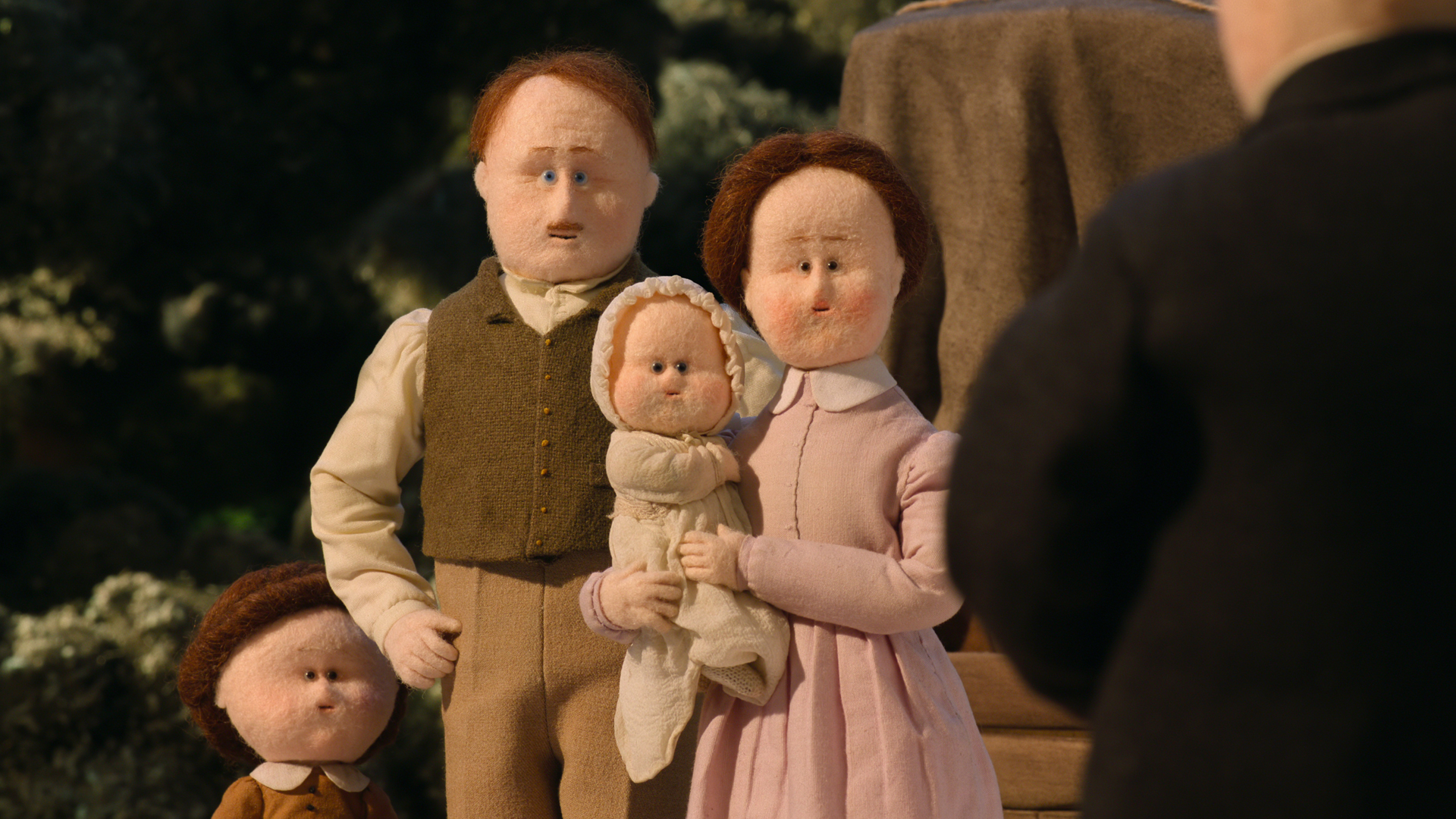
Billed as an eccentric dark comedy, The House follows three tangential stories, set in different time periods, in the titular but unnamed abode.
The first tale, occurring in the 1800s, is centered on a poor human family that moves into ‘the House’ following a chance encounter with a mysterious but eerie benefactor. The second plot follows an unnamed humanoid mouse (Jarvis Cocker) in the present day, who works as a property developer and, after coming into possession of the building, battles some unexpected guests as he tries to renovate it. Set in the near future, the final story introduces audiences to Rosa (Susan Wokoma), an anthropomorphic cat who struggles to restore ‘the House’ – which was her childhood home – to its former glory.
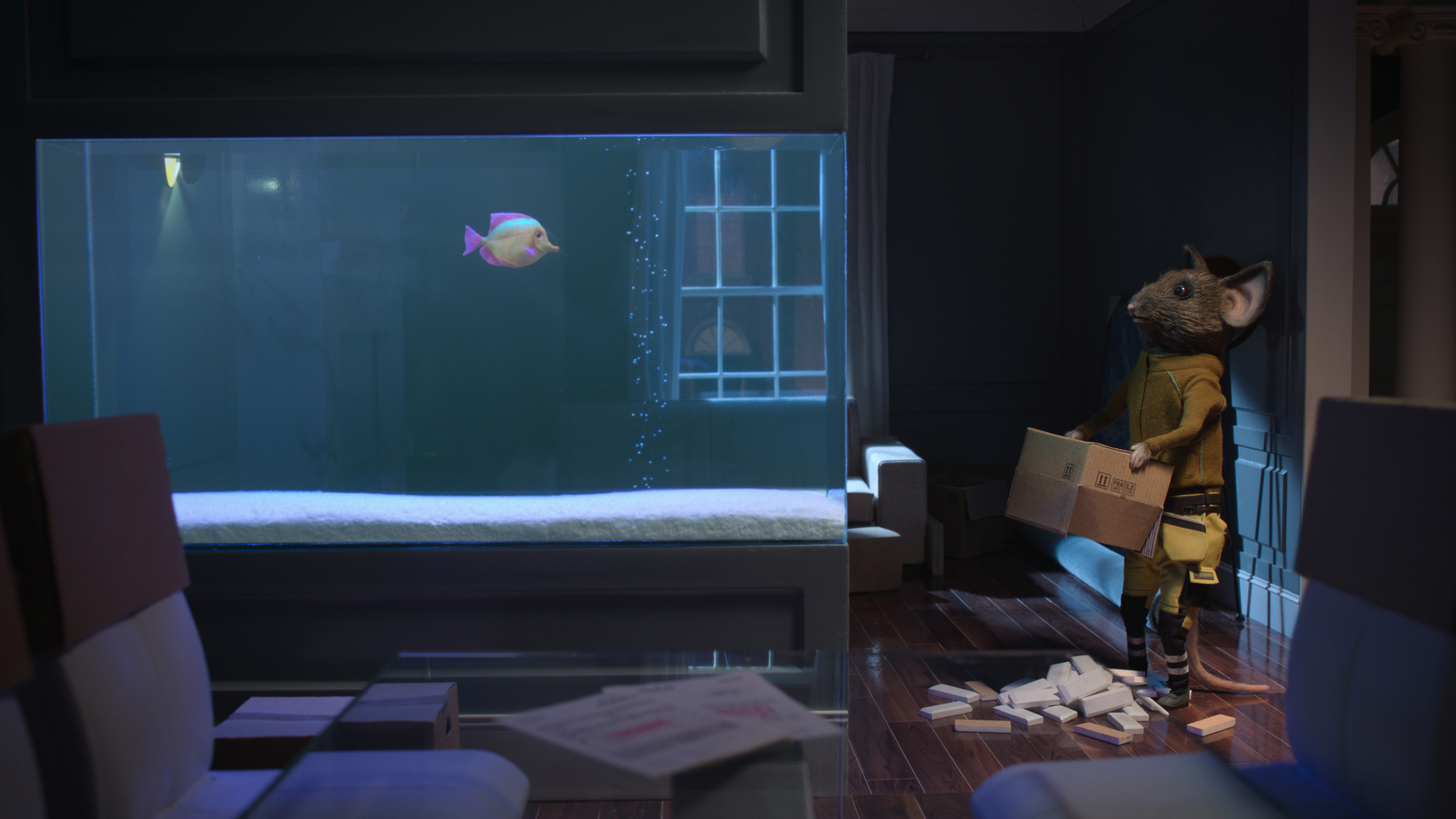
Unsurprisingly, it’s the first story that sets the entire miniseries in motion. ‘The House’ is only built after the eerie benefactor slyly convinces the family’s drunk husband and father Raymond (Matthew Goode) to trade their lowly cottage for a life of so-called royalty.
But, just as the Butterfly Effect theory suggests, Raymond’s seemingly small decision ends up having huge, nightmarish ramifications – not just for his family, but for whoever owns the building down the line.
Events that eventually materialize are of the psychological horror variety, with the foreboding and dread-inducing atmospheres making way for shocking twists and turns as each narrative barrels towards its conclusion. Such moments are elevated by the use of stop motion animation, which only add to the spookiness through the jagged and unnatural movements of its characters. Think Wes Anderson’s Fantastic Mr. Fox meets David Firth’s Salad Fingers – or, going back further, Ray Harryhausen’s 1963 film Jason and the Argonauts – to get a sense of The House’s visual style and tone.
Links to the past
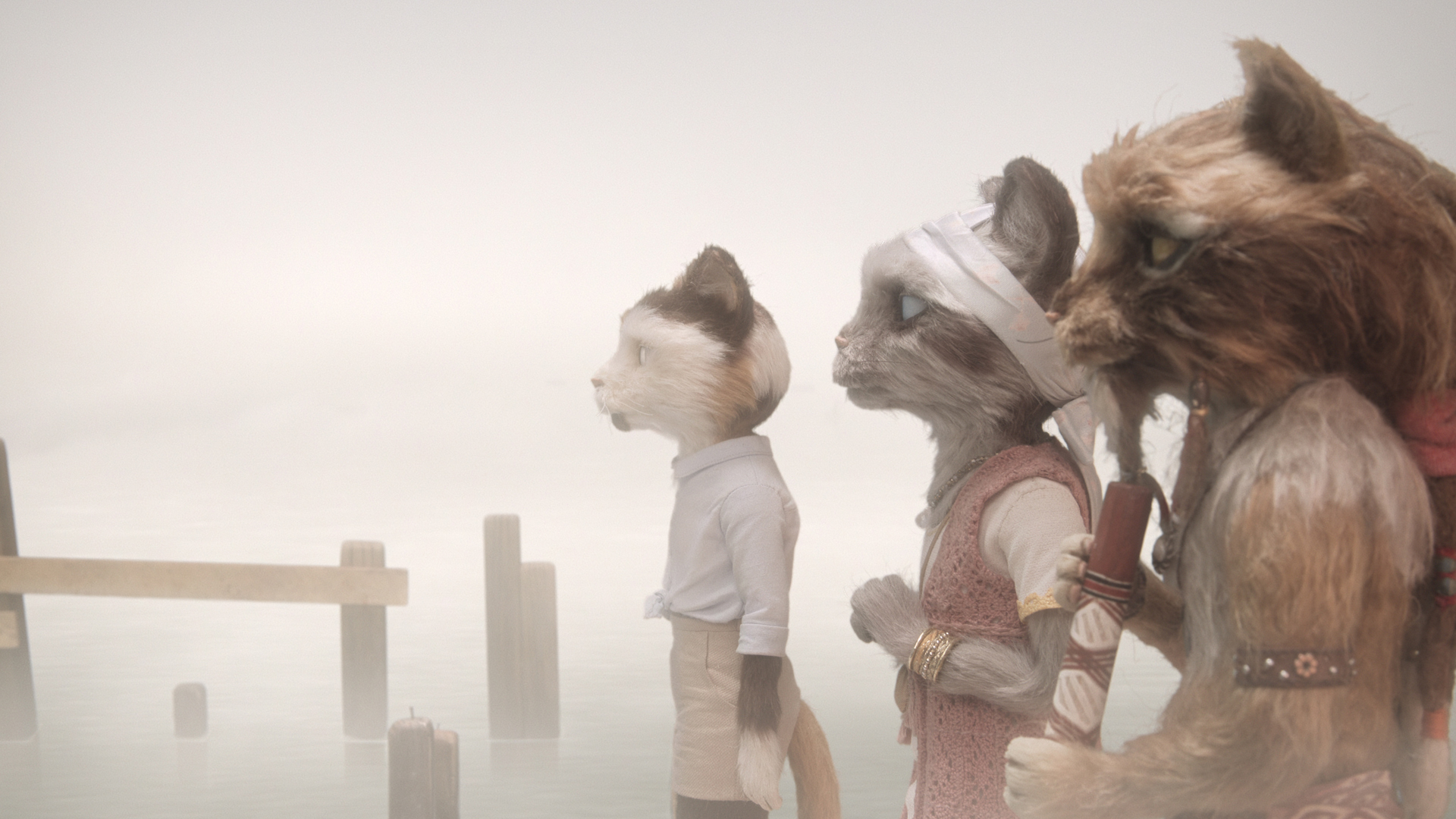
That isn’t to say that Nexus Studios’ use of stop motion is outdated – far from it. Sure, the animation style isn’t widely employed in modern productions but, while Nexus uses stop motion to add some horror-based artistic flair to proceedings, the overall animation is pretty fluid. Those unaware of Nexus’ use of stop motion and puppetry may even believe the miniseries’ aesthetic was created using VFX and CGI effects – a compliment that shows how seamless some of The House’s animation is.
And it isn’t just the application of stop motion animation that’ll be a pleasing throwback for some viewers. The second and third stories, with their anthropomorphic animals, have a distinctly Sylvanian Families feel; the 1980s Epoch-created flocked figurines’ friendly aesthetic, which appears to have inspired the look for The House, juxtaposing the miniseries’ dark comedy vibe.
The House’s cast and musical elements are hat-tips to decades gone by, too. Acting icons of the 1980s and 1990s, including Miranda Richardson (The Crying Game, Blackadder) and Stephanie Cole (Tenko, Doc Martin) are among the show’s stellar cast. The addition of Helena Bonham Carter (Sweeney Todd, Harry Potter), is also fitting, given that The House is occasionally reminiscent of the works of Tim Burton, Bonham Carter’s ex-partner and collaborator.
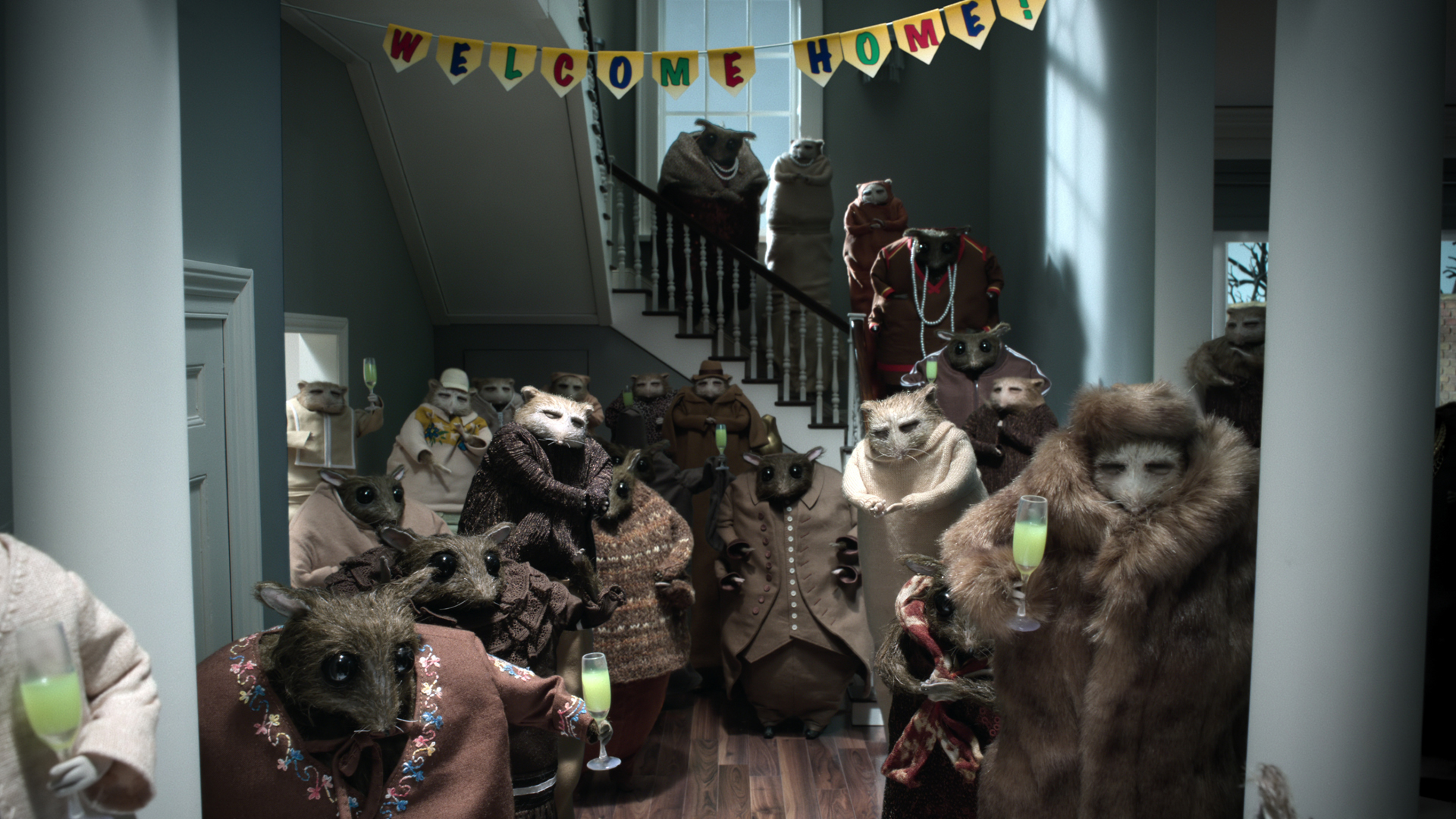
Speaking of Burton and the aforementioned Wes Anderson, The House is pretty amusing. Yes, its comedy is of the smirk or chuckle variety, rather than entering laugh out loud territory, but its subtlety is what makes it work so well in the miniseries’ context. For a show that can be very macabre, a sprinkling of humor throughout eases the tension at necessary moments.
As for the miniseries’ score, Gustavo Santaolalla (The Last of Us Part II, Narcos) provides some haunting pieces that infuse the show with more terror. But it’s the additions of ex-Pulp frontman Jarvis Cocker and, more unexpectedly, Pharrell Williams’ hip-hop rock band N.E.R.D that’ll surprise audiences most. Cocker lends his voice to chapter two’s mouse protagonist, as well as co-writing and performing the end credits song, while N.E.R.D track Lapdance is also used during chapter two – the duo’s inclusion bringing an unusually nostalgic slice of 1990s and early 2000s music to proceedings.
Uneven footings
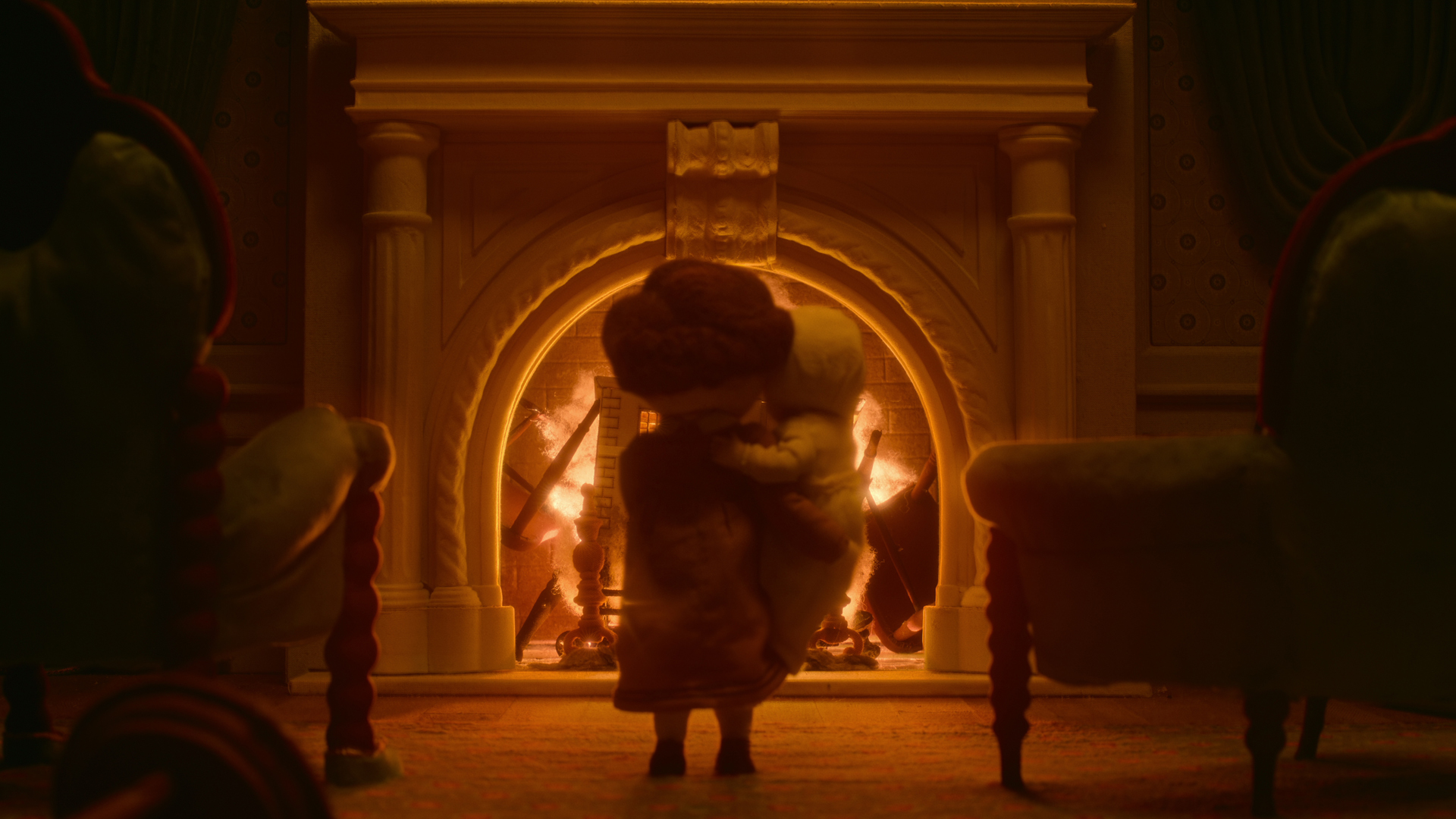
Despite The House’s good elements, it does have a few missteps.
For one, The House’s final moments are, if you pardon the pun – after all, the final story focuses on a character called Rosa – bewilderingly rosy. Given the two stories that preceded it, chapter three’s ending is a bit too optimistic and cheery; a finale that’s antithetical to the weirdly unpleasant endings that chapters one and two delivered.
The House also ends pretty abruptly. Sure, its three-story arc, presumably based on how its story is structured to incorporate the past, present and future, does work effectively. But, while Netflix and Nexus seemingly want viewers to interpret each tale and its themes in the manner they see fit, a little more plot exposition or proper interconnectivity between the trio of stories wouldn’t have gone amiss. An entry that bridges the gap between chapters one and two may have been enough to provide better continuity.
People with epilepsy, or other conditions that can be exacerbated by strobe lighting, should be aware that The House doesn’t come with a seizure trigger warning. Given that chapter two contains flashing lights during one particular scene, the lack of a trigger warning message is certainly an oversight on Netflix and Nexus’ part.
Our verdict
The House is a freakish, darkly comedic arthouse-style miniseries that’ll stay with you for some time after the credits roll. Its loosely linked narratives will draw you in with their emotionally resonant story beats and modern stop motion aesthetic, before its wicked about-turns will leave you disturbed, unnerved and even bizarrely hopeful.
There’s enough leeway in The House’s trio of tales to allow for audience interpretation concerning their chapter titles, themes and allegorical endings – so much so that you may find yourself re-watching them, or scouring the internet, to understand the deeper meaning behind them. But that’s what the best TV shows, films and miniseries do: they make their audience think, and The House certainly does that.
It’s not perfect, with The House losing its way when it substitutes the surreal for more cheery plot elements. And, as a three-parter, it feels like it ends before it truly gets going. But its quirks, gallows humor and shock value, coupled with its superb animation and anxiety-inducing disposition, largely make up for its flaws. And, amid other Netflix originals set to land in January 2022, including Ozark season 4, The House is a uniquely devised miniseries that certainly stands out among its peers.
The House launches exclusively on Netflix on Friday, January 14.
- These are the best Netflix movies to watch right now
0 comments:
Post a Comment